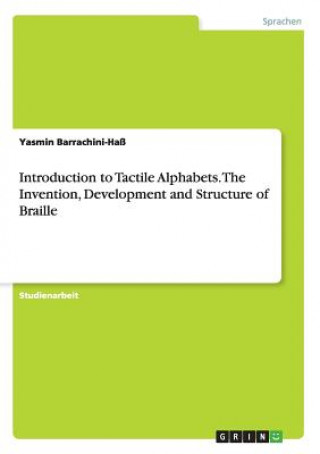
Kód: 10938134
Introduction to Tactile Alphabets. The Invention, Development and Structure of Braille
Autor Yasmin Barrachini-Ha
Studienarbeit aus dem Jahr 2012 im Fachbereich Sprachwissenschaft / Sprachforschung (fachübergreifend), Note: 1,7, Universität Bremen (Fachbereich Sprach- und Literaturwissenschaften), Veranstaltung: Schriftsysteme- Typologie und ... celý popis
- Jazyk:
 Němčina
Němčina - Vazba: Brožovaná
- Počet stran: 32
Nakladatelství: Grin Publishing, 2016
- Více informací o knize

Mohlo by se vám také líbit
-

Indizieren - Visualisieren
768 Kč -

Juristische Probleme bei der Abgrenzung der Arbeitnehmeruberlassung zum Werkvertrag
1601 Kč -
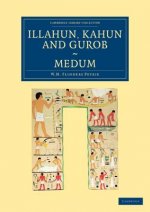
Illahun, Kahun and Gurob. Medum
1268 Kč -

Husserl's Phenomenology
7550 Kč -

Plants with Anti-Diabetes Mellitus Properties
8242 Kč -

Capturing Darkness with Light
797 Kč -

MM. Les Conseillers de la Cour de Cassation
481 Kč
Dárkový poukaz: Radost zaručena
- Darujte poukaz v libovolné hodnotě a my se postaráme o zbytek.
- Poukaz se vztahuje na celou naši nabídku.
- Elektronický poukaz vytisknete z e-mailu a můžete ihned darovat.
- Platnost poukazu je 12 měsíců od data vystavení.
Více informací o knize Introduction to Tactile Alphabets. The Invention, Development and Structure of Braille
Nákupem získáte 108 bodů
 Anotace knihy
Anotace knihy
Studienarbeit aus dem Jahr 2012 im Fachbereich Sprachwissenschaft / Sprachforschung (fachübergreifend), Note: 1,7, Universität Bremen (Fachbereich Sprach- und Literaturwissenschaften), Veranstaltung: Schriftsysteme- Typologie und Geschichte, Sprache: Deutsch, Abstract: This term paper focuses mainly on the characteristics of Braille which are relevant from a linguistic point of view, but also discusses historical events of how Louis Braille invented the aforesaid writing system, as well as how the aforesaid writing system evolved over the past 187 years. It must also be said that this term paper focuses mainly on American English Braille (AEB), because this particular writing system is widely used, well documented, and has evolved faster than any other tactile writing system. However, other types of Braille are occasionally mentioned in this paper, too.§§Braille is a writing system that is mostly used by blind people or people who suffer from significant vision loss. However, individuals who are not visually impaired can also read it by using their eyesight. A special feature about Braille is that it can be read by using just one's finger tips.§§The first chapter deals with tactile alphabets in general. Since Braille is just one type of many existing tactile alphabets, this chapter clarifies its definition and variations. There are two different types of tactile alphabets. One is based on embossed Roman letters, and the second type of tactile alphabet is based on arbitrary symbols. Each type is further explained in a subchapter. The second chapter is about the invention and development of Braille. This chapter focuses, among other things, on the life of Braille, how he became blind and created his own writing system that evolved to be the most important reading and writing tool to many blind communities all over the world. In subchapter 2.2, it is also explained how Braille derived from an already existing tactile alphabet called night writing, and how this aforesaid writing system is structured.§§The third chapter discusses linguistic features and structures of Braille. The arrangement of AEB is discussed, as well as the difference between Grade 1 Braille and Grade 2 Braille. Moreover, the third chapter discusses how Braille can be used alternatively for all other writing systems, which, among other things, do not resemble the Latin alphabet, and how that leads eventually to different variations of Braille. Finally, the Unified English Braille (UEB) code is also included as a topic in the third chapter. The aforesaid chapter is followed by a conclusion, a list of references and a declaration of authenticity.
 Parametry knihy
Parametry knihy
1084 Kč
- Plný název: Introduction to Tactile Alphabets. The Invention, Development and Structure of Braille
- Autor: Yasmin Barrachini-Ha
- Jazyk:
 Němčina
Němčina - Vazba: Brožovaná
- Počet stran: 32
- EAN: 9783668197220
- ISBN: 3668197229
- ID: 10938134
- Nakladatelství: Grin Publishing
- Hmotnost: 62 g
- Rozměry: 148 × 210 × 7 mm
- Datum vydání: 08. May 2016
Oblíbené z jiného soudku
-

Amigurumis - soft and cosy!
390 Kč -

GND PAW Plüsch 15 cm Everest
252 Kč -

UNO No Mercy
509 Kč -

KLEINE PRINZ
130 Kč -

Trötsch Plüschpuppe Findus Kuscheltier
336 Kč -

Grammatik aktiv - Deutsch als Fremdsprache - 2. aktualisierte Ausgabe - A1-B1
463 Kč -

Harry Potter und der Stein der Weisen (Harry Potter 1)
250 Kč -

Amigurumis - small and sweet!
390 Kč -

Winnetou 1. Teil
1341 Kč -

Mein Kampf(German Language Edition)
652 Kč -

Mit Erfolg zum Goethe-Zertifikat C1
610 Kč -

Disney Rapunzel (Puzzle)
405 Kč -

Jujutsu Kaisen - Band 19
139 Kč -

Grammatik aktiv
582 Kč -
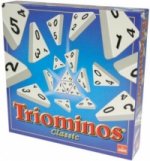
Triominos Classic
424 Kč -

Wir Kinder vom Bahnhof Zoo
256 Kč -

PAW PATROL Ryder Plüsch, 20 cm
335 Kč -

Avocado Smash - 1ks
259 Kč -

GND PAW Plüsch 23 cm Skye
349 Kč -

GND PAW Plüsch 15cm Tracker
302 Kč -

Mit Erfolg zum Goethe C1. Testbuch + online
610 Kč -

Deutsch intensiv Wortschatz C1
449 Kč -

Schritte plus Neu 1
556 Kč -

Meine Reise durch Europa
267 Kč -

Duden 12+: Kennst du das? Meine bunte Kinderwelt (Würfel)
219 Kč -

Beste Freunde Arbeitsbuch A1.2 mit Audio-CD
260 Kč -

Momente A2.2: Kursbuch plus interaktive Version
248 Kč -

Momente A2.2. Arbeitsbuch plus interaktive Version
242 Kč -

GDH Deluxe Room Cakeys Küche
727 Kč -

Spektrum Deutsch A2+: Integriertes Kurs- und Arbeitsbuch für Deutsch als Fremdsprache
698 Kč -

Mein Kampf(German Language Edition)
927 Kč -

Im Westen nichts Neues
296 Kč -

Deutsch für clevere Kids - 5 Wörter am Tag
389 Kč -

Super! 2/A2: učebnice a pracovní sešit + CD zdarma
505 Kč -

Tarot-Kartenset: Magic Soul Tarot
593 Kč -

Tempo, kleine Fische!
203 Kč -

My Rummy
522 Kč -

Projekt C1 neu: Lehrerbuch mit Audios online
844 Kč -

Deutsch Großes Übungsbuch Wortschatz aktuell A2-C1. Buch
750 Kč -

Geheim-Codes
281 Kč -
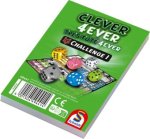
Clever 4ever, Challenge Block, 12 Stück
140 Kč -

Insel der blauen Delphine
250 Kč -

Der Vorleser
296 Kč -

Alpe Adria Radweg
455 Kč -

Hitster - Summer Party
666 Kč -

Prüfungstraining DaF - C1
596 Kč -

Wizard
205 Kč -

Killing Stalking 01
342 Kč -
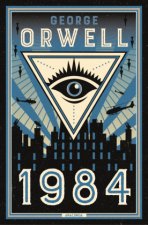
1984
143 Kč
Osobní odběr Praha, Brno a 12903 dalších
Copyright ©2008-24 nejlevnejsi-knihy.cz Všechna práva vyhrazenaSoukromíCookies



 Vrácení do měsíce
Vrácení do měsíce 571 999 099 (8-15.30h)
571 999 099 (8-15.30h)